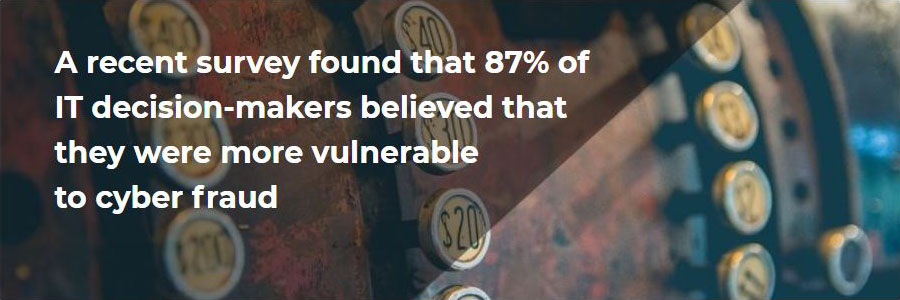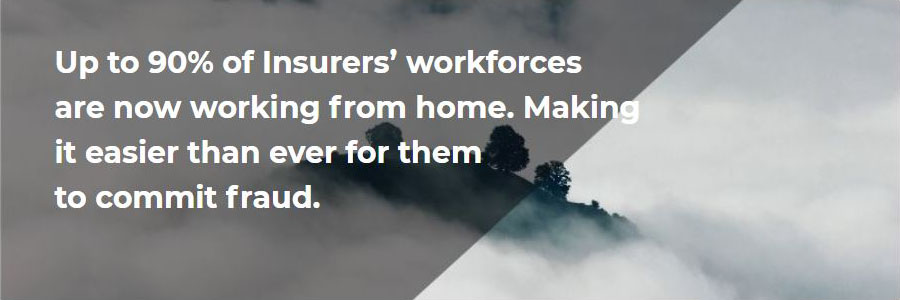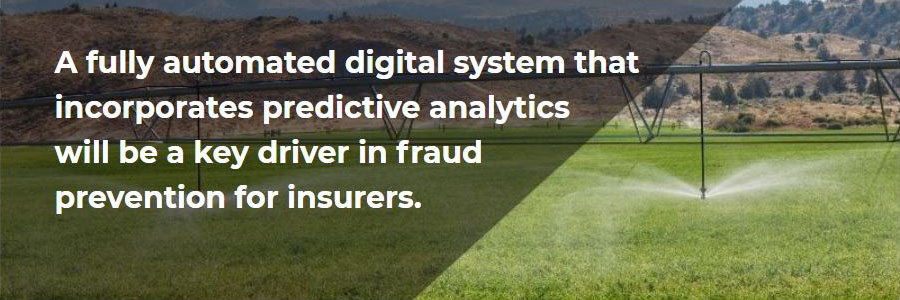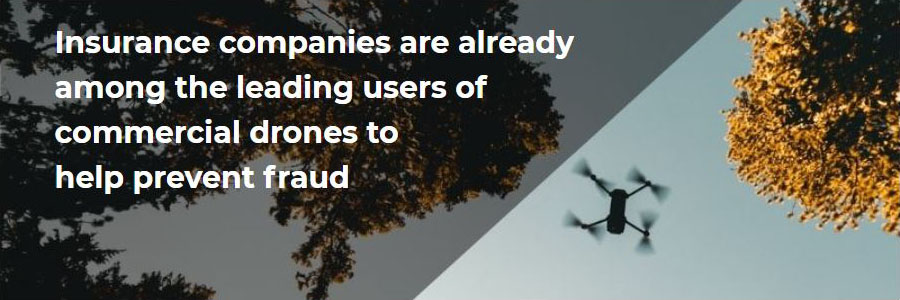Using technology to crack down on commercial insurance fraud

COVID-19 has thrown a range of challenges at commercial insurance companies, from the need to carry on their own operations remotely, to managing an unprecedented number of claims.
Among those challenges is the heightened risk of fraud—both the traditional and newer forms such as cyber fraud. Unfortunately, if like many insurers you’re running a legacy IT system you’re more vulnerable to fraud.

A recent survey by Macro 4 found that 87% of IT decision-makers believed that their companies were more vulnerable to cyber fraud because of old systems with lax authentication functionality. Legacy systems also require more manual processing, introducing the risk of human error and opening up pathways for employee fraud.
In the middle of a pandemic, a complete digital transformation of your insurance IT system may be impractical. Fortunately, there are several ways you can use technology right now to cut down on the risk of fraud.
Why is the pandemic exposing commercial insurers to fraud?
Fraud is essentially an opportunistic crime. The pandemic combines that opportunity with motivation to create fertile ground for a range of fraud.
Financial anxiety
When the economy takes a dive, fraud claims soar. In 2008, during the global financial crisis, fraud claims climbed dramatically. The Australian Bureau of Statistics found that 7.5% of jobs and 8.2% of wages were lost between March 14 and April 18 during the initial COVID-19 lockdown. Small businesses, which tend to operate with tight profit margins at the best of times, are being pushed to the edge. A number of business sectors reported dramatic drops in revenue.
While amendments to insolvency legislation have seen a pause in businesses entering administration, CreditorWatch, one of Australia’s biggest credit reporting firms, is anticipating around 2,000 businesses entering administration after subsidies ended in September. Business owners who are struggling may be tempted to commit insurance fraud to keep the company afloat, or at the very least ensure that they’re walking away from their failed venture with some money for themselves.
Disengaged or disgruntled employees
Insurance companies may also face a fraud threat from the inside, especially if they’ve had to downsize their workforce. Employees who are worried that they’ll lose their jobs may also be angry. Drug, alcohol and gambling addictions are also exacerbated during times of anxiety, leading to poor judgment.

In many insurance companies, as much as 90% of the workforce is now working from home. Without visibility, that makes it easier than ever for them to commit fraud.
Staff have the ability to photograph confidential data from their computer and then sell it or blackmail a company to keep it private. Where companies have outsourced offshore they’ve mandated that the outsourcer forbid staff to bring phones into the office to prevent this type of fraud. Now these staff are having to work from home this can’t be enforced.
Vulnerability to hackers and cyber fraud
Staff are also vulnerable to outside actors looking to commit cyber fraud. Very few companies have the technology to ensure the same high level of security when staff work from home as they have in the office. Because the shift happened so fast, and at such a large scale, most employees are using their own computers and network connections to work from home. These are less likely to have robust security such as encryption and secure passwords, leaving them vulnerable to outside hacking attempts. Sensing the opportunity, ransomware attacks have become much more prevalent over the last year. The going rate for ransom demands in the US is now between $10M and $40M.
Pressure to skip due diligence
While insurers are adjusting to the new world order, commercial claims and enquiries are spiking. Business owners want to understand the limits of their business interruption cover, as well as public liability if a customer contracts COVID-19. A huge proportion of the people who are now working from home have had to buy office or IT equipment and need business property insurance.
To keep up with demand, insurers have needed to shift as many interactions online as possible. Those companies who already had advanced digital underwriting, claims or administrative processes have fared better than those who are still dependent on call centres and in-person claims but everyone is feeling the pinch.
Under pressure, it’s more likely that staff will miss a red flag for fraud or waive certain requirements that usually act as a check. For example, an insurance company that usually requires a physical signature from their client might accept the digital alternative. This makes things easier for customers, but also increases the likelihood of fraud. It’s also harder to verify identity, allowing fraudsters to falsely claim that they’re a client holding a policy with your company and instruct claim payouts to be sent to a new account—theirs.
How can technology help commercial insurers crack down on fraud?
Machine learning is the most powerful tool for fraud prevention.
Insurers who are still running legacy systems are dependent on manual processes. Data is captured in paper forms and then entered and stored in one of several databases—or more often the forms are just scanned and stored as an image so the data is inaccessible.
Different systems are often used by each functional team. Work flows around the office going from role to role, new business team, administration staff, claims managers, product managers, underwriters, actuaries, etc. Each role has historically been siloed to the point of specialisation. The effect is that none of these people can pick up larger patterns that might indicate fraud.

The future is AI-based fraud prevention. Machine learning excels at finding patterns and anomalies between events, trends and data that wouldn’t come to the attention of humans. A fully automated digital system that incorporates predictive analytics into the build will be a key driver in fraud prevention for insurance companies.
Where should insurers utilise technology to cut down on fraud right now?
Automated background checks on business owners and key staff
Background checks are a standard part of hiring. AI-powered background check software can help. Companies like Checkr, GoodHire and Onfido use machine learning to carry out background checks across multiple databases. They can use data from criminal databases, credit checks and identify verification to spot patterns and inconsistencies that humans may not pick up.
Running these powerful background checks on your key employees and leadership can offer a simple way to cut down on fraudulent activity within your workforce.
Credit and social media checks
When processing new business and renewals, consider utilising technology that lets you do a credit check and social media scan on your clients. These services won’t only do background checks on staff: they’ll also run checks on clients and agents that might help you spot warning signs.
A business owner applying for cover for a new business who fails a credit check could set off a red flag for fraud risk, for example. Likewise, social media activity that implies someone is in dire financial straits might warn off an insurer.

Drones
Insurance companies are already among the leading users of commercial drones. But drones don’t just offer efficiency. They also have the potential to help prevent fraud; estimated by Deloitte to amount to $32 billion per year.
High value claims, for example those involving significant property damage, have historically been processed by assessors and experts who attend the site in person. Drones can help by taking pictures of the site as soon as the claim is reported, to check the accuracy of the damage.
Satellite photos
Satellite imagery via Planet means insurers can better appraise risk-prone areas, plus use before-and-after images to assess claims. For property insurers, including commercial property, it can help insurers check if a property was in a bushfire or flood zone. It’s also a boon for underwriters who are setting premiums based on risk.
By buying software applications or services, or partnering with insurtechs, insurance companies can find fast solutions to reduce their risk of fraud without having to reimagine their business.
